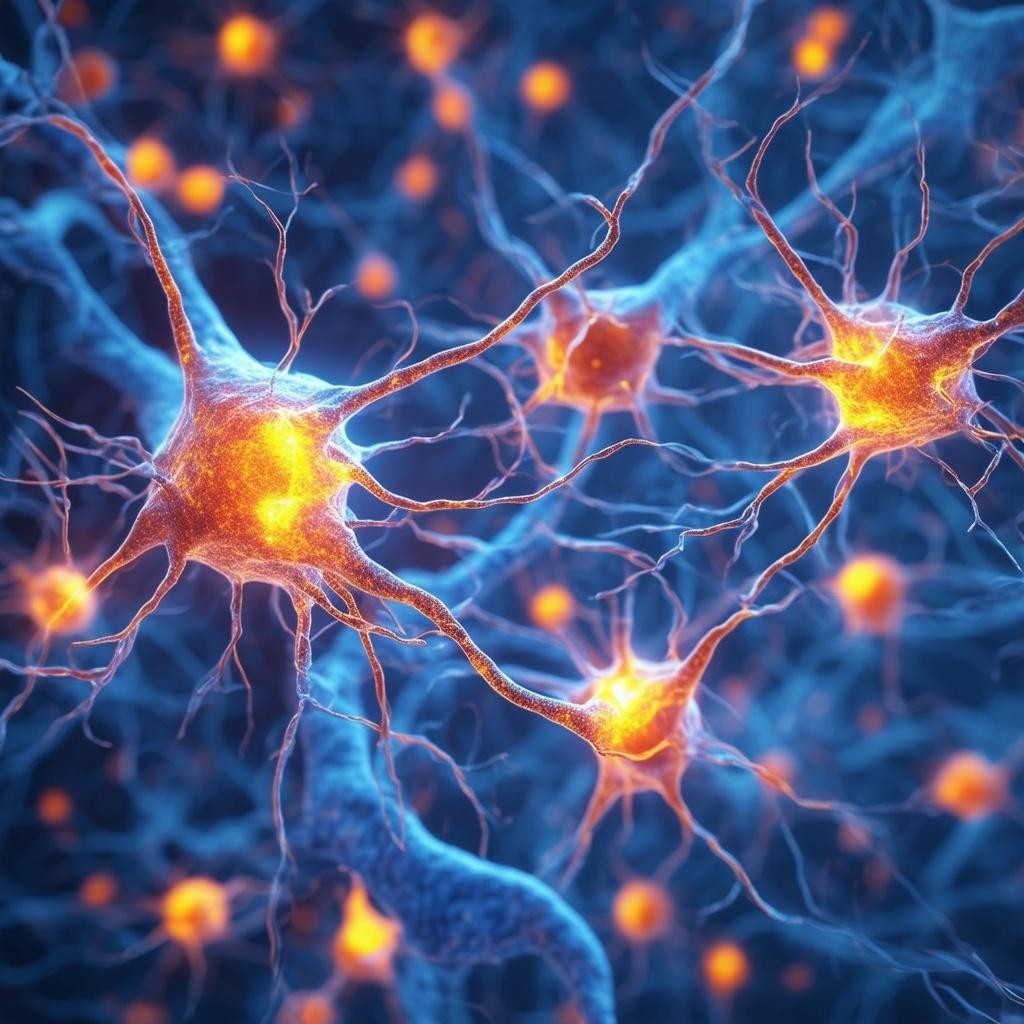
1. Synchronisation of neuron groups in the brain:
At the neuronal level, synchronisation begins with the coordinated activity of groups of neurons. As described by Singer (1999), this synchronisation is a fundamental mechanism of information processing in the brain [1]. However, it is important to note that complex representations such as ‘images’ do not yet emerge at this basic level.
Hebb (1949) postulated that neurons that fire together strengthen their connections (‘Neurons that fire together, wire together’) [2]. This Hebbian plasticity forms the basis for the development of functional neuronal ensembles.
2. Analogy to groups of people:
Let us now consider the analogy with groups of people such as families, circles of friends or work groups:
a) Family:
In a family, ‘synchronisation’ begins with basic interactions and shared experiences. Similar to neuronal connections, ‘social connections’ are strengthened through repeated interactions. In his family theory, Bowen (1978) describes how family members form an emotional system that is characterised by repeated patterns of interaction [3].
b) Circle of friends:
In a circle of friends, initial synchronisation could be seen as a process of ‘getting to know each other’ and discovering shared interests. Dunbar (2018) argues that shared experiences and stories play an important role in forming and maintaining social bonds [4].
c) Working group or sports team:
In a working group or sports team, synchronisation begins with the coordination of goals and the development of common working methods or playing strategies. In his model of team development, Tuckman (1965) describes the early phase as ‘forming’, in which team members orientate themselves and begin to build relationships [5].
3. Discussion of the analogy:
At this fundamental level of synchronisation, there are indeed interesting parallels between neuronal and social systems:
a) No complex representations:
At the level of initial neuronal synchronisation, it is not yet possible to speak of storing an ‘image’. The situation is similar with social groups: In the initial phase of group formation, there is still no distinct ‘self-image’ of the group.
b) Basic connectivity:
In both cases, the first step is to establish basic connections and communication channels. In the brain, these are synaptic connections; in social groups, these are communication channels and social bonds.
c) Activity patterns:
In both neuronal and social systems, characteristic activity patterns emerge in this phase. In the brain, these are coordinated firing patterns of neurons; in social groups, they are recurring patterns of interaction.
d) Plasticity:
Both systems show a high degree of plasticity in this phase. Neuronal connections are strengthened or weakened, social relationships are formed and adapted.
e) Emergence:
In both cases, we can speak of emergent properties that arise from synchronisation but are not yet to be understood as complex representations or self-images.
4. Limits of the analogy:
It is also important to note the limits of this analogy:
a) Intentionality:
Social groups exhibit a higher degree of intentionality and self-reflection than neural networks.
b) Complexity of interactions:
The interactions in social groups are often more complex and multi-layered than the electrochemical signals between neurons.
c) Time scale:
The time scales on which synchronisation takes place in neuronal and social systems differ considerably.
In summary, the analogy between the synchronisation of groups of neurons and groups of people is quite fruitful at this fundamental level. It helps us to understand the basic processes of connectivity, pattern formation and emergent properties in both systems. At the same time, we must be careful not to take this analogy too far, as social systems have additional levels of complexity that are not present in neural systems.
This approach opens up interesting research questions, such as:
- How do more complex representations or self-images in social groups develop from these basic synchronisation processes?
- What role do leaders or particularly influential individuals play in this process, analogous to ‘hub neurones’ in the brain?
- How can we promote the resilience and adaptivity of groups in this early phase of synchronisation?
[1] Singer, W. (1999). Neuronal synchrony: a versatile code for the definition of relations?. Neuron, 24(1), 49-65.
[2] Hebb, D. O. (1949). The organization of behavior: A neuropsychological theory. Wiley.
[3] Bowen, M. (1978). Family therapy in clinical practice. Jason Aronson.
[4] Dunbar, R. I. M. (2018). The anatomy of friendship. Trends in cognitive sciences, 22(1), 32-51.
[5] Tuckman, B. W. (1965). Developmental sequence in small groups. Psychological bulletin, 63(6), 384.